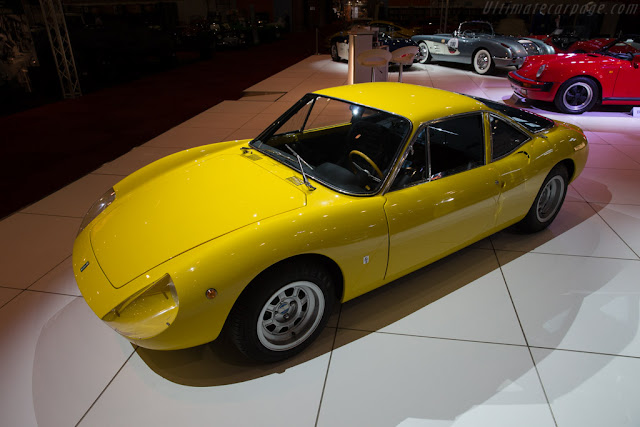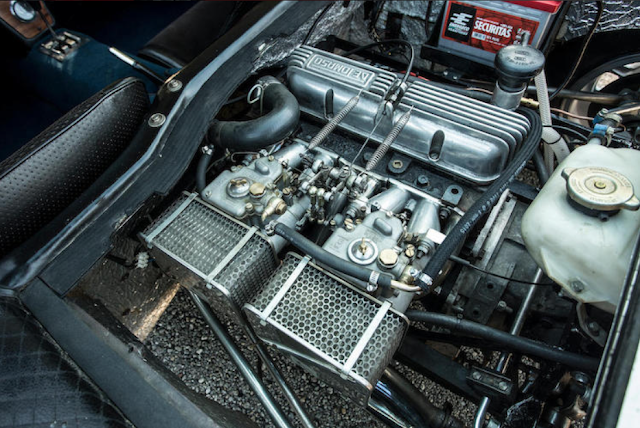Alejandro De Tomaso started racing in Argentina in 1951, before moving to Italy to drive Maserati and OSCA; the latter company was founded by the Maserati brothers after selling the company that bears their name. This experience subsequently inspired De Tomaso to form his own company - De Tomaso Automobili - in Italy, in Modena to be precise, in 1959. The races were, in the beginning, the first priority, with the new company that built cars for the Formula Junior, Formula 3, Formula 2 and Formula 1.
The first De Tomaso for road use, the Vallelunga, did not appear until 1965. Designed by Giorgetto Giugiaro and built by Carrozzeria Fissore, the prototypes of Vallelunga, a spyder and a pair of coupés, all with an aluminum body (See photo below), appeared for the first time around 1963/64. The hope of De Tomaso was that a major automotive manufacturer took over the project but, when he realized that nobody was interested, he decided to continue alone, contracting the construction to the Ghia Carrozzeria of Turin, a company that he would later purchase. Including the prototypes, about 55 copies of the Vallelunga emerged.
The standard Ghia built Vallelunga was characterized by an extraordinary coupé body made of fiberglass, compared to the aluminum prototypes assembled by the Fissore. The access to the engine is accessible through a glass door, rather than, as on the prototypes, through the rear part of the hinged vehicle.
The Vallelunga was the first Italian sports car that had a central tube frame and mid-engine. It featured a Chapman-style chassis with a central beam moved by a 1.5-liter Ford Kent four-cylinder engine. Equipped with Weber carburetors. This resulted in a power output of 74 kW (100 hp).
The Vallelunga will be the base for Mangusta, a car whose arrival in 1967 has allowed De Tomaso to establish itself as a serious automaker. (bonhams.com & memim.com)
Chassis VLD 1611
Chassis 807 DT 0126
Chassis 807DT0115
1963 De Tomaso Vallelunga Spyder Protype by Fissore
The prototype of Vallelunga in 1963 was dressed with an open body, designed and manufactured by Savigliano Carrozzeria Fissore. The car had a low, slightly curved waistline with an eye-catching, clear towering roll bar behind the driver's seat. The general view of the structure was similar to the Porsche 550 Spyder. The body was made of aluminum, the entire car should not have weighed more than 480 kg. Alejandro de Tomaso claimed top speed came in at over 220 km / hr.
Although De Tomaso was considering to launch a production version of this model, the Fissore Spyder remained unique. He opted for a closed version body. The Spyder has been used successfully for several years in road racing. (memim.com)
1963 De Tomaso Vallelunga Coupe Protypes by Fissore
After the Spyder, Fissore designed a closed structure for the Vallelunga chassis. The technical orientation of the vehicle remained unchanged, but the body had no resemblance to the heavily tilted toward racing Sypder. The headlights were located behind a plastic cover, and was located on the rear of a large panoramic window. Fissore built two coupé prototypes made of aluminum. They were presented at the Turin Motor Show in October 1964. A special feature of Fissore prototype was that the entire body portion could be folded behind the B-pillar as a unit. (memim.com)
(Photos from ultimatecarpage.com, en.wheelsage.org, bonhams.com,
oldiesfan67.canalblog.com, topworldauto.com & coachbuild.com)






















































































